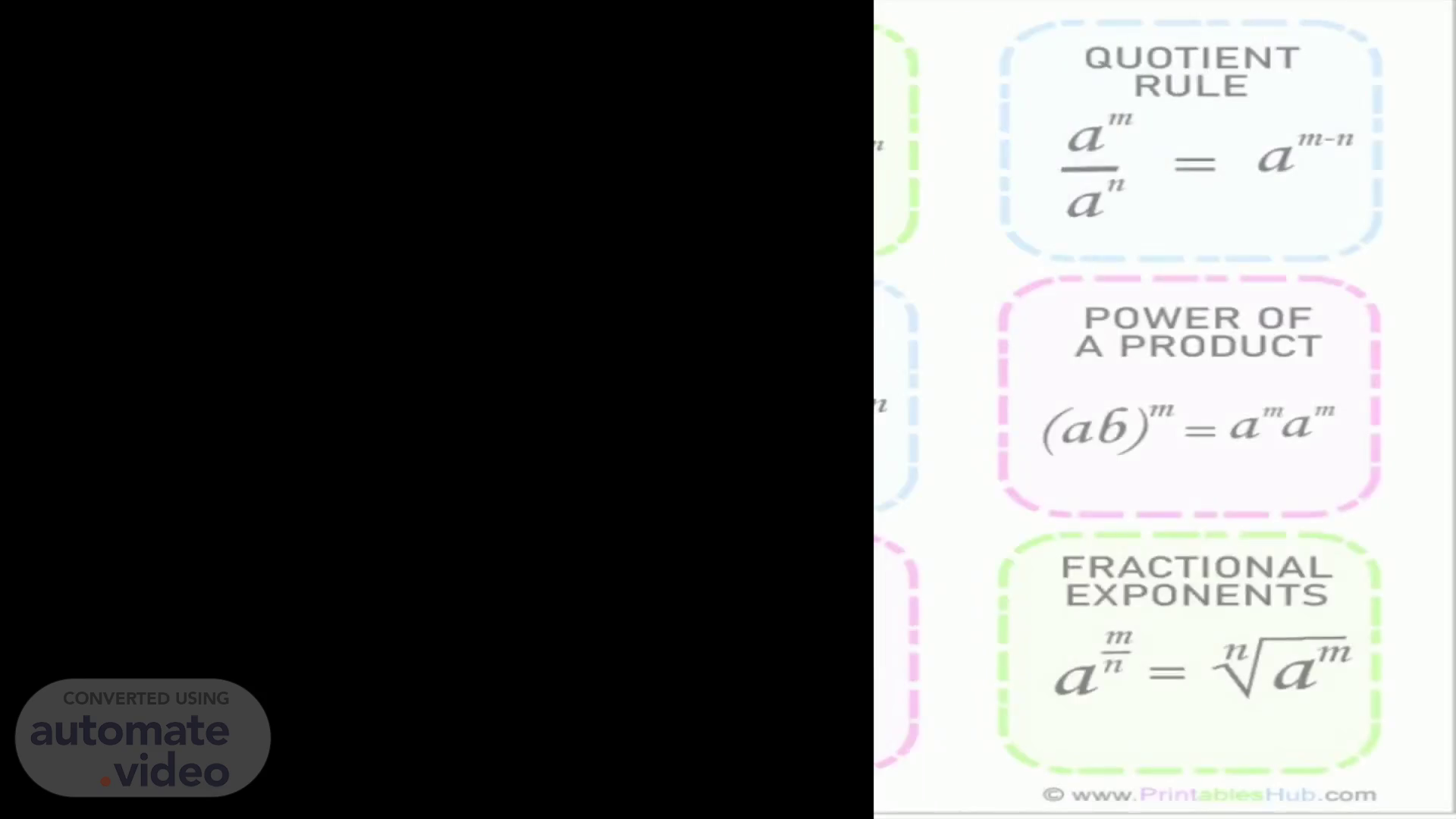
PowerPoint Presentation
Scene 1 (0s)
Diagram Description automatically generated.
Scene 2 (16s)
[Audio] If 2 of the same numbers have different multiples you can add the multiples together keeping the non-multiple the same. Ex. 4^4^3=4^5.
Scene 3 (32s)
[Audio] Since multiplying exponents is adding the exponents together what would dividing be like?.. It would be the same as subtracting the exponents ex. 4^4 divided by 4^3 but as like earlier stated the base number of the exponents must be the same as the other for this rule to work.
Scene 4 (52s)
[Audio] When negative integer has an even number in the exponent, then the final product will always be a positive integer. Ex. E^-m=1/E^m.
Scene 5 (1m 8s)
[Audio] When a power is in parentheses with a power on the outside of said parentheses, you add the exponents together while keeping the base number the same aka the number that has the exponent on it. Ex.(2^2)^2=2^4.
Scene 6 (1m 27s)
[Audio] When there are more than one variables being multiplied together and raised to a power. The power of a product rule tells us that we can simplify a power of a power by multiplying the exponents and keeping the same base..
Scene 7 (1m 43s)
[Audio] If a fraction is being multiplied by an exponent, you can just add the exponent to what's in the fraction ex.(¾)^2=3^2/4^2.
Scene 8 (1m 59s)
[Audio] A easy rule when an exponent is zero any base will still equal to 1 ex. 2^0=1.
Scene 9 (2m 15s)
[Audio] Fractional exponents use fractions to represent powers or roots of numbers. They are helpful in solving math problems with roots and exponents and follow the same rules as whole-number exponents..